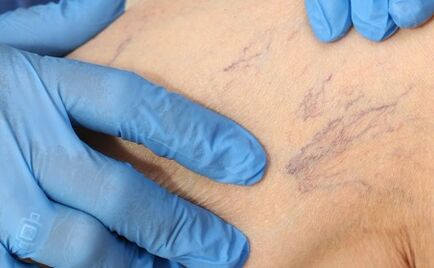
Varicose veins are characterized by the uneven expansion of the hearts of the legs, the appearance of the buttons on them and their length.The disease gradually develops, characterized by a chronic course.
Women with intravenous veins are more frequent than men.And among the representatives of gender stronger, the face is prone to this disease that loves sports with the maximum distribution of the leg load: football, tennis, basketball.
Why expand the veins
There are three types of veins in the fabrics of the legs: the surface, deep, connecting superficial and deep veins.Each vein is an empty tube along a blood flow from the tissue of the foot to the heart.There is no muscle cells in the walls of the vein, so the vein cannot shrink to push the blood.This task is done by the skeletal muscles of the leg.And the valves are placed inside the veins - they close their sash at the time of reduced muscle, avoiding the backflow of blood.Each muscle contraction "pushes" the blood above.
When the blinking valve is closed loose, part of the blood flow again, stagnating in Vienna, pressing on its wall, gradually extending them.The lumen of the venous veins is extended, its wall lasts.This is the beginning of varicose veins.
Disease stimulus factors:
- Genetics - With a lack of congenital collagen fibers, the wall of the vein is less elastic and easy to last.
- The stagnation of blood in the blood vessels of the feet is overweight and obese, wearing shoes with heels more than 3-4 cm, with standing in a place of people with a number of professional people and sellers, cooking, lecturers, or with an office worker.
- Changes in hormones: Progesterone content increases in the blood of a pregnant woman, making the walls soft and prolonged, so the risk of varicose veins in the time of childhood increases.
The first sign of a venous vein - how to not miss
The alarm of varicose veins is originally considered to be the time when blood vessels or blood vessels - veins of the retinal veins appear on the skin of the leg.This is not a cosmetic defect, but the beginning of the disease!
At the same time or after a while, the second group of signs - a heavy feeling in the legs, stormed into the foot after standing or sitting on the chair.When a person starts to walk, a serious feeling decreases: The skeletal muscle is highered with a higher stagnant blood and the prolongation of the walls of the vein decreases.
The further development of the disease is manifested by edema on the foot - these are traces of socks, thickness of one leg compared to the second time with visual test.
After that, the muscles in the calf muscles of the legs, fatigue when walking, dry skin and pigments, the rising pearl nodes and the formation of trophic ulcers are recorded.
When should you contact the vascular surgeon?
When the first grids and blood vessels appear, you should consult an expert and if necessary, do an ultrasound study of the veins of the lower limbs and conduct varicose veins on the veins.The earlier diagnosis of varicose veins, the more opportunities to prevent it in the initial stage.












































